A healthy aquarium is one that has a significant population of beneficial bacteria. Good aquarium bacteria keep ammonia levels in the water at a low and manageable level. This in turn protects your fish against illnesses related to water conditions, which is the leading cause of death among fish kept in captivity.
As crucial as good bacteria may be, there are also harmful bacteria that you should steer clear of. This article sheds some light on the difference between the two!
Role Of Good Bacteria
Beneficial bacteria play an important role in maintaining the nitrogen cycle of your tank. If you’re new to the concept, this article provides a comprehensive overview of the concept, as well as several helpful tips on maintaining tank health.
When fish waste, undigested food, and other organic matter decay in the water, ammonia is released. Beneficial bacteria dispose of this harmful substance in two stages:
- In the first stage, the Nitrosomonas bacteria convert ammonia into nitrite.
- Because nitrite is still toxic to fish, a second step is required. In this step, a group of bacteria known as Nitrobacter converts nitrite into nitrate, which is not harmful to fish at low levels.
Good aquarium bacteria convert toxic matter into substances that are more benign – this is why they play an important role as a biological filtration system for your aquarium. Let’s take a closer look at the two key types of good bacteria you will find in your tank.
Types Of Good Bacteria
While there are many types of bacteria you can find in your tank, nitrosomonas and nitrobacter are the two species that play a crucial role in the nitrogen cycle.
Nitrosomonas species
Nitrosomonas bacteria are ammonia-oxidizing bacteria that use bacteria as an energy source. That’s right – this type of bacteria feeds on ammonia.
In a process known as nitritation, Nitrosomonas bacteria combine oxygen with ammonia to release nitrite and water. This is an important process, as ammonia is a volatile substance that would otherwise wreak havoc on the ecology of your aquarium.
By converting ammonia into nitrite, Nitrosomonas bacteria create a more stable compound that is less toxic to fish. It also increases the availability of nitrogen in your tank, which will allow your aquatic plants to thrive.
Nitrobacter species
Nitrobacter bacteria oxidize nitrite into nitrate to meet their energy needs. They are often seen as crucial components of the nitrogen cycle in oceans and freshwater, because it supplies aquatic plants with the inorganic nitrogen they need. You can think of it as the backbone of most underwater ecosystems.
The process of converting nitrite into nitrates happens quickly – nitrobacters work fast. Thanks to their efficiency, nitrite levels rarely accumulate after the ammonia-oxidizing bacteria have performed their role.
The symbiotic relationship between these bacteria is a wonder to behold. Let’s take a closer look at the sources of waste they remove.
Sources Of Waste
The key waste product that is removed by good bacteria is ammonia. Ammonia in fish tanks can come from a variety of sources. Here are a few main ones:
Chemically Treated Tap Water
As part of the water treatment process, a compound known as chloramine is sometimes used. This is usually done because chloramine is a more stable compound compared to pure chlorine, which can be volatile.
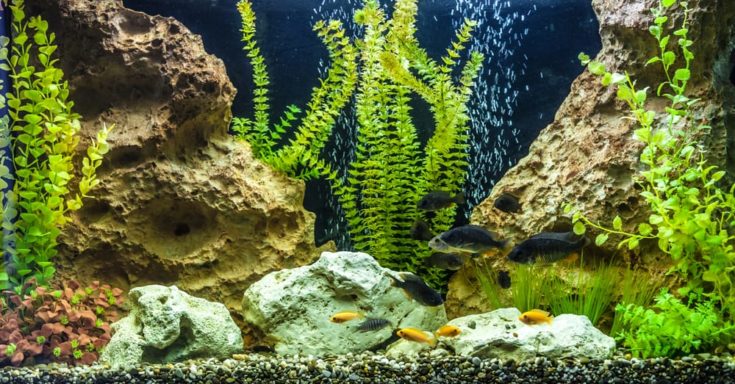
However, the problem arises in the fact that chloramine consists of chlorine bonded to ammonia. These bonds get broken in the water as part of the water treatment process. While this allows for the chlorination of water, it also creates an unhealthy level of ammonia in your tank.
If your tank suffers from a perpetually high level of ammonia, it might be worth looking into the water treatment methods used in your region. Consider using alternative sources of water for your tank.
Fish
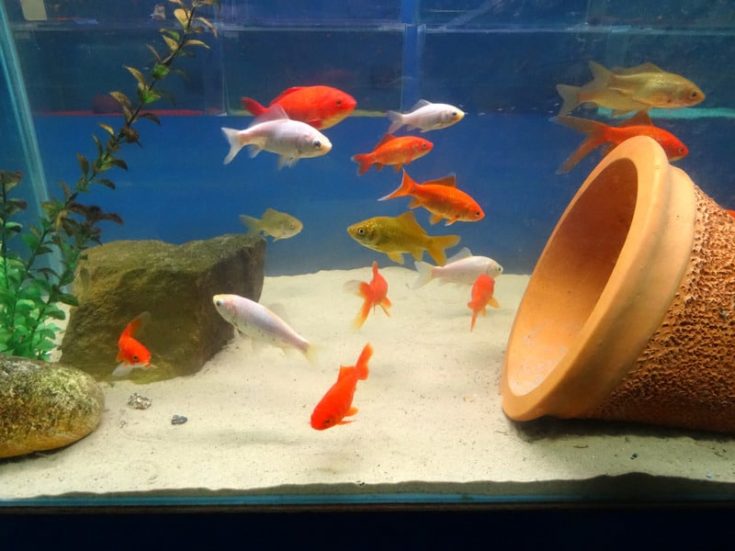
It may seem odd to think about this, but fish actually release ammonia as a byproduct when they perform biological processes. That’s right – fish release the same substances that can potentially harm them.
Food that enters the body of a fish is typically used for energy, but it is also used for growth. The biological process of growth requires the transformation of food into proteins, which in turn allows the fish to grow bigger.
As food is converted into proteins, a byproduct is created. This byproduct causes ammonia to seep through the gills of the fish and into the water. This growth process is healthy and inevitable, which is why managing ammonia levels in your tank is crucial.
Decaying Matter
When organic matter decomposes, ammonia is often released as a byproduct. This is why it is important to ensure that your tank is constantly clean and free of any decaying matter. A few common examples include:
- Uneaten food
- Dead fish
- Fish excrement
Anything that can decay will cause ammonia levels in your tank to spike. Therefore, it is important to be vigilant when it comes to removing rotting matter from your tank. Nitrifying bacteria also manage ammonia levels by converting ammonia into less toxic substances.
Introducing Good Bacteria Into Your New Aquarium
When you get a new aquarium, it can be tempting to fill it with fish immediately and get started on your new hobby. Don’t do that! Fish require good bacteria in order to survive, which new tanks lack.
Because beneficial bacteria play a crucial role in the biofilter of your aquarium, introducing good bacteria into a new tank can go a long way. Wondering how to add good bacteria to your fish tank? Here’s how:
Seeding A New Aquarium
Seeding a new aquarium is the process of “seeding”, or transferring some of the bacteria from an existing tank to a new one. Established tanks have a healthy colony of nitrifying bacteria. When these bacteria are transferred to a new tank, they reproduce and populate the tank with good bacteria.
Nitrifying bacteria attaches itself to the surfaces found in a tank. Therefore, the best way to seed a new aquarium is to use any one of the following media from an established tan:
- Gravel
- Filter
- Stones
- Glass
- Bio Balls
Under normal circumstances, an aquarium takes 6 weeks to finish cycling. Seeding an aquarium reduces this duration by half.
Ghost Feeding
Ghost feeding is the practice of placing food in an empty tank and letting it decay naturally. Doing so creates ammonia, which kickstarts the nitrogen cycle by attracting Nitrosomonas bacteria from the surroundings.
Your tank should be filled with a layer of substrate and water if you opt for this method. Steer clear of fish and plants at this stage. This method will cycle your aquarium in 2 months, after which you can start stocking it with fish.
Aquarium Bacteria Supplements
Another way of introducing healthy bacteria into your freshwater tank is by using bacteria supplements. Here are some of our top picks:
Bacteria supplements jumpstart the nitrogen cycle by introducing nitrifying bacteria directly into your tank, rather than relying on bacteria from the environment. This allows the tank to complete its nitrogen cycle much more quickly.
Do bear in mind that bacteria supplements merely introduce bacteria into a tank – they still need an ammonia source to feed on!
Cycling With Fish
It may seem counterintuitive to kick start the nitrogen cycling process with fish – after all, aren’t you introducing good bacteria into the tank for the fish?
Hardier species of fish are able to survive in aquariums that haven’t been cycled. When properly introduced to a tank, resilient fish can create the conditions necessary for nitrifying bacteria to grow and thrive.
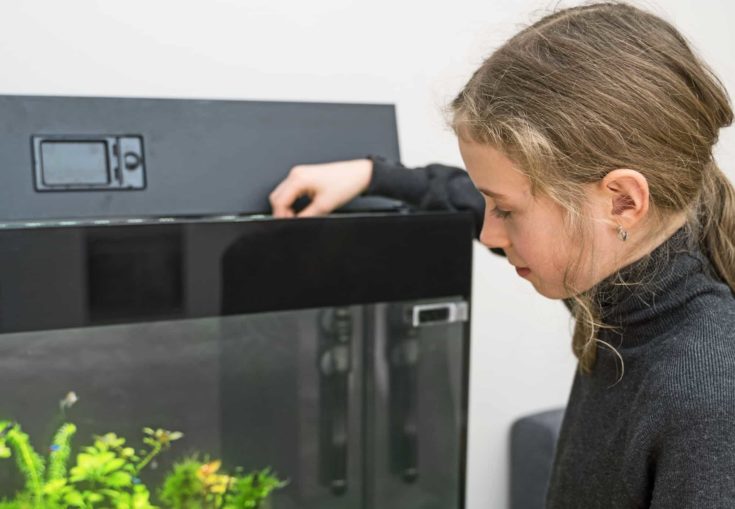
Begin by feeding your fish very lightly, and by measuring water parameters consistently. Over time, you can gradually increase feeding amounts. You will know that your nitrogen cycle is complete when you are able to feed your fish with a regular quantity of food, yet still have the ammonia and nitrite readings stay at 0ppm.
Good VS. Bad Bacteria
While good bacteria play a crucial role in maintaining the health of your aquarium, bad bacteria can pose a significant health risk to your fish. Most bacterial infections manifest in external symptoms, but bacteria such as Aeronomas can cause severe symptoms such as internal bleeding.
Given the negative consequences of exposing your fish to bad bacteria, it is important to minimize the predisposing factors that may increase your fish’s susceptibility to bacterial infections. These factors lower your fish’s resilience against infections, and should be minimized at all costs:
Rough handling Of fish
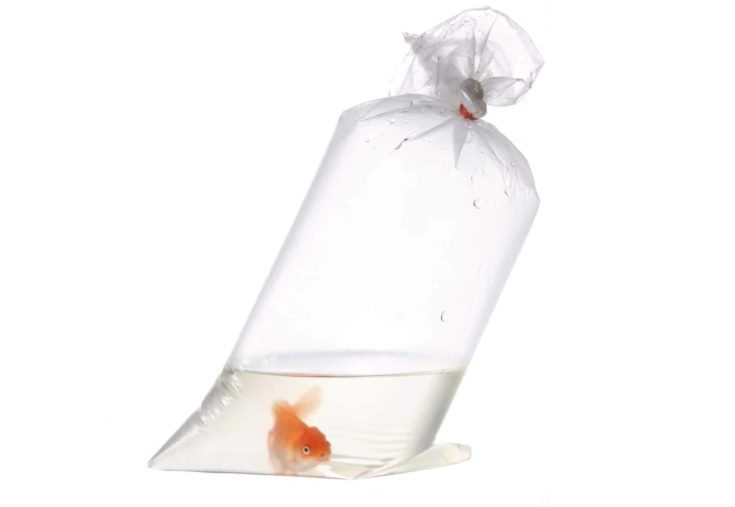
Fish can be easily injured by rough handling as they have extremely delicate skin and gills. External injuries make your fish more vulnerable to infections by creating a direct pathway between the fish’s internal system and the harmful bacteria in its surroundings. Always treat your fish gently to minimize the risk of injuries.
Malnutrition
Malnutrition severely compromises the immune system of your fish, which can also make them more prone to bacterial infections. Fish need to have their nutritional needs met to function at their biological peak and fend off infections.
Organic Pollution
Organic pollution in fish tanks is usually caused by fish waste and uneaten food. These pollutants cause ammonia and nitrite levels in the water to spike, which will severely weaken your fish’s immunity. This once again increases their risk of bacterial infections, which is why tank maintenance needs to be undertaken on a regular basis.
Symptoms Of Bacterial Infections
Having a chronically high level of bad bacteria in your tank can heighten the risk of bacterial infections in your fish. Here are some of the physical symptoms of bacterial infections:
- Tattered fins
- White film coating the fish’s body and fins
- Bleeding from the body
- Open sores around the body and mouth
- Cloudy eyes
In many cases, bacterial infections only occur as a form of secondary infection. They are usually triggered by a primary illness or injury, such as abrasions and parasitic infections. For example, a fish that sustains fin injuries in a fight may suffer from a form of bacterial infection known as fin rot.
While most bacterial infections are caused by underlying conditions, they can also occur in fish that have been exposed to poor water conditions for an extended period of time. Therefore, it is always important to maintain the cleanliness and hygiene of your tank.
Common Types Of Harmful Bacteria
The types of harmful bacteria found in freshwater tanks can have dire consequences on both the fish inhabiting the tanks, as well as the hobbyists handling it. Here are a few common types of harmful bacteria you should be wary of:
Aeromonas
Aeromonas are a genus of rod-shaped bacteria that can cause fatal bacterial blood infections in fish. These bacteria typically grow at 82°F, but are known to spawn at temperatures as high as 98°F.
Because these bacteria can grow in relatively warm bodies of water, most types of tropical freshwater fish are susceptible to aeromonas infections, particularly if they have compromised immune systems or external injuries.
Aeromonas bacteria can be found in tank water as well as substrate. It enters the bloodstream of fish via external lesions before causing them to die of blood poisoning. These infections have a high fatality rate and can be transmitted between fish. Treat your fish gently and ensure that water parameters are healthy to prevent infection.
Mycobacterium
Mycobacterium can infect both fish and humans. Symptoms of a mycobacterium infection in fish include skin lesions, uncoordinated swimming, abdominal swelling, as well as the formation of internal lesions in the liver, kidney, and spleen.
This is a contagious and fatal infection, with a mortality rate of over 50%. Fish are typically infected by swimming in infected bodies of water, as mycobacterium are waterborne and can enter the bloodstream of fish by gills.
Humans may also sustain mycobacterium infections by handling polluted bodies of water or infected fish. These infections are rarely fatal in humans, but can range in severity. Mild cases heal on their own, while more severe infections may require months of antibiotic treatment.
Pseudomonas fluorescens
Pseudomonas fluorescens are known to cause bacterial infections that cause internal bleeding and blood poisoning. Fish housed in tanks with particularly high pH are particularly susceptible to pseudomonas infections, as are fish with pre-existing injuries and compromised immune systems.
These bacterial infections are typically transmitted physically. Fish swimming in infected bodies of water may ingest these bacteria orally. Physical injuries such as injured gills and skin abrasions also make a fish more susceptible to these infections.
Flexibacter columnaris
Columnaris disease is a common bacterial infection that is caused by the Flexibacter columnaris bacteria. Freshwater fish residing in colder bodies of water ranging from 53°F to 58°F are particularly susceptible, as this is when the disease is most prevalent.
The symptoms of columnaris disease resemble that of a fungal infection. Symptoms include skin lesions, fin rot, and injured gills. This disease is highly contagious among fish, and outcomes are often fatal. This is why it is important to quarantine sick fish to minimize the spread of diseases.
How To Prevent Harmful Bacteria From Forming
Given the significant risk posed by harmful bacteria, it is crucial to learn how to prevent harmful bacteria from forming. It is significantly easier to prevent bacterial infections than it is to treat it, so read on to learn about our top tips!
Quarantine New Fish
Quarantining new fish is one of the best ways to protect your tank and fish against harmful bacteria.
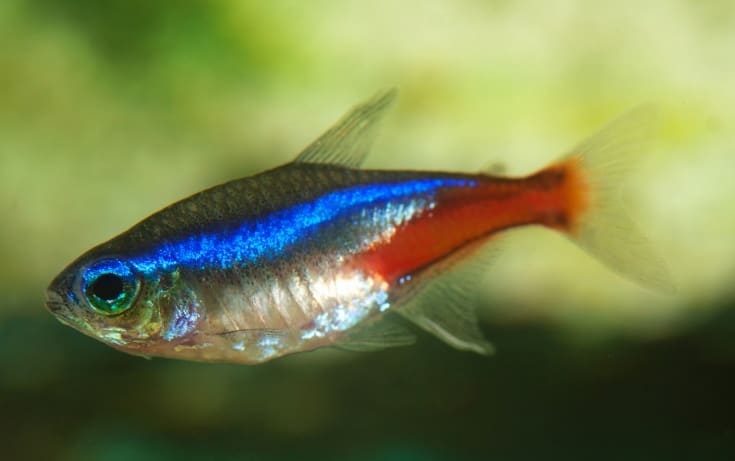
When introducing new fish to an established tank, you need to note that these fish may introduce bacteria acquired from their previous homes. When new types of bacteria are introduced to your tank, your existing fish population is put at risk.
Why? Fish that have established themselves in your tank have had their immunity shaped by the existing water conditions. When new pathogens are introduced, your fish may not be biologically equipped to manage these threats effectively.
Quarantining new arrivals is easy. Simply place them in a separate tank containing the same water parameters as your existing tank – this will also give new fish a chance to get used to their new surroundings!
Use An Ultraviolet Sterilizer
Ultraviolet (UV) sterilizers can be a highly effective means of controlling the population of harmful bacteria in your tank. As water containing free-floating bacteria passes through the UV bulb, they are “killed” by the light emitted by these sterilizers. This prevents the harmful organisms from growing or multiplying.
Because many types of harmful bacteria are free-floating, this can be a highly effective way of managing bad bacteria levels in your tank. If you’re concerned that using an ultraviolet sterilizer will kill the beneficial bacteria in your tank, rest assured that this is most often not the case.
Beneficial bacteria are typically attached to surfaces such as gravel, substrate, and tank walls. Because these bacteria do not come into contact with the UV bulb, they will not be harmed. However, you should steer clear of UV sterilizers if your tank is new. Give your good bacteria some time to attach themselves to different tank surfaces.
Clean Your Equipment
Tank equipment can be a breeding ground for harmful bacteria, which is why it is important to clean them before you handle your fish. Here are our top tips:
- Have a separate set of tank equipment for your quarantine tank. Quarantine tanks are typically used to house fish that are ill, making pathogen transfer more likely. Using separate sponges, nets, and scrapers is the best way to minimize that risk.
- Disinfect tank equipment on a regular basis, particularly before and after use. Tools that are used to clean aquariums can become a breeding ground for harmful bacteria if they are not cleaned and dried.
- Always wash your hands and arms before doing any work in your aquarium! This is especially the case if you choose to handle fish in your primary aquarium after dabbling in your quarantine tank. Use a good antibacterial soap to keep your fish safe and healthy.
Conclusion
Put simply, a healthy aquarium is one with a thriving population of good bacteria, while containing minimal levels of bad bacteria. Accomplishing both may appear difficult at first, but as long as you follow the tips outlined in this article, you’re good to go.
A healthy aquarium keeps infections and diseases at bay, thus ensuring that your fish stay healthier for longer. In the long run, this leaves you with an aquarium full of healthy fish that thrive in their surroundings. Isn’t that what we all want?
If you enjoyed this article, do make sure to share it with someone else who would benefit from these pointers! As usual, feel free to comment with any questions, and we’ll be more than happy to answer.
